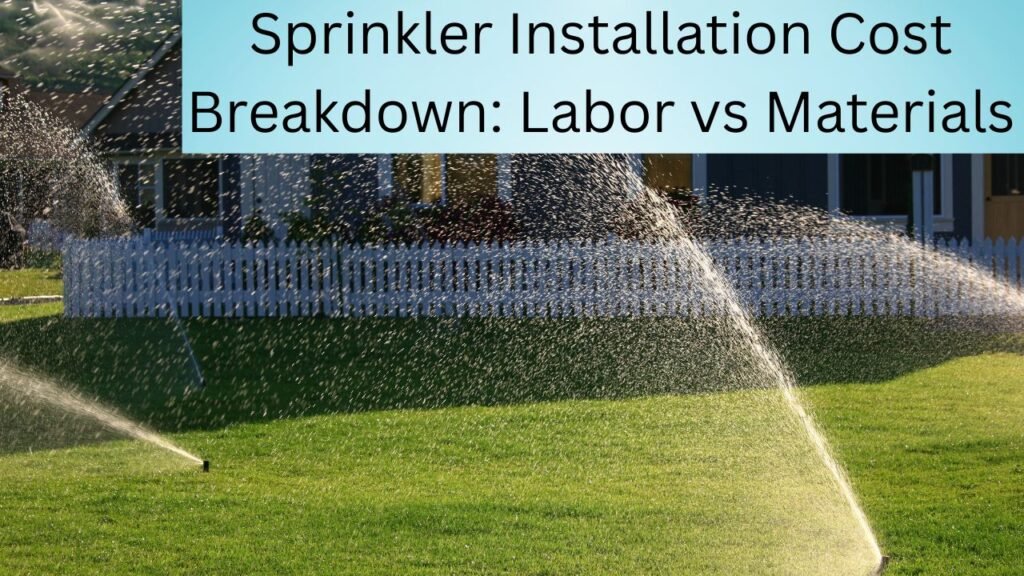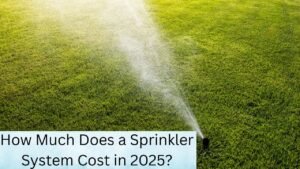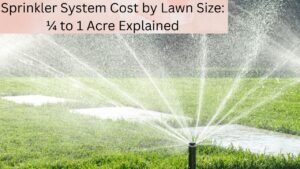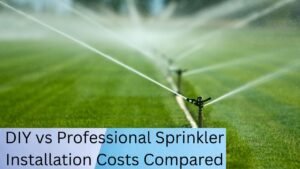If you’re considering installing a sprinkler system to maintain a lush lawn or garden, understanding the sprinkler system installation cost is crucial. While sprinkler systems provide convenience and water efficiency, many factors influence the total price. Whether tackling the project yourself or hiring a contractor, knowing how labor, materials, and local regulations affect costs will help you make smart decisions. This guide breaks down everything that contributes to sprinkler system installation cost, including materials, labor, geography, and smart technology options.

The Cost Breakdown: Labor vs. Materials
In youtube video below: Labor cost Or Material cost | Which is Better | by Civil Engineers (YouTube, 1 Feb 2021), the pros and cons of labor versus material expenses are discussed. The video helps homeowners and builders make informed decisions for efficient project budgeting.
Labor Costs: What You’re Paying For
Labor is a significant part of the sprinkler installation cost, but it’s essential to understand exactly what you’re paying for. Each stage of the installation process involves specific tasks, and the complexity of your system will determine how much labor is needed.
- Trenching: Digging trenches for the piping is the first step, and the cost varies based on the depth and width of the trench. If your yard is rocky or has tree roots, labor costs will increase. Expect to pay $1 to $3 per linear foot for trenching.
- Pipe Laying: Laying the pipes, which connect the sprinkler heads to the water source, is another labor-intensive step. The material choice (PVC vs. polyethylene) can affect installation time, with polyethylene taking longer. On average, labor costs for pipe laying range from $50 to $100 per hour.
- Sprinkler Head Installation: Installing the sprinkler heads and ensuring they’re placed at the right height is vital for an even distribution of water. Each head costs $2 to $20, depending on the type (rotary vs. spray), and the labor cost is about $5 to $15 per head.
- Controller Programming: Setting up the sprinkler controller, especially if it’s a smart system, requires specialized knowledge. Expect to pay $50 to $150 for labor to set up a basic system, and $150 to $300 for smart controllers, which offer scheduling, weather-based adjustments, and Wi-Fi connectivity.
Material Costs: What’s Included?
The material costs of sprinkler systems can vary significantly based on the type and quality of components you choose. Here’s a detailed look at what influences material costs:
- Sprinkler Heads: The cost of sprinkler heads ranges between $2 to $20, with rotary heads typically being more expensive than spray heads. Premium models with pressure regulation or flow control features may cost even more, but they ensure better water efficiency.
- Piping: You’ll need piping to carry water from the main water supply to your sprinkler heads. PVC is the most common and cheapest option, at about $0.50 to $1 per linear foot, while polyethylene pipes, which are more flexible and durable, typically cost $1.50 to $3 per foot.
- Valves and Controllers: Valve costs range from $15 to $100, depending on the brand and features. Controllers, which can range from simple mechanical timers to advanced smart controllers, cost anywhere from $50 to $500.
How Geographic Location Impacts Costs
Sprinkler system costs vary depending on where you live in the United States. Factors like labor rates, material availability, and even regional water conservation laws can impact your overall expenses.
- Urban vs. Rural Areas: Labor costs in urban areas are generally higher due to the cost of living and greater demand for skilled contractors. For example, in cities like New York or San Francisco, labor costs can be 25-30% higher than in smaller towns or rural areas.
- Regional Material Variations: Some areas may have access to certain materials more easily than others, affecting both cost and availability. For example, in places with a high demand for irrigation systems like Arizona, the price of PVC pipes and sprinkler heads may be slightly higher due to scarcity.
- Water Conservation Laws: In areas facing drought conditions, such as California or Nevada, water-saving systems, like drip irrigation and smart controllers, are often required by law. These systems may cost more upfront but can save money in the long term with reduced water bills.
The Impact of Smart Controllers and Quality Materials on Long-Term Savings
Opting for higher-quality materials or incorporating smart technology into your sprinkler system may seem costly initially, but the long-term savings can be significant.
- Smart Controllers: These devices use weather data to adjust watering schedules, preventing over-watering. On average, homeowners can save 20-30% on their water bills by installing a smart controller. While they may cost $200 to $500, the return on investment is usually realized in 1 to 2 years.
- Premium Materials: Upgrading to high-quality sprinkler heads and pressure-regulating valves can reduce the need for repairs and replacements, increasing the lifespan of your system. Higher-quality components can also improve water distribution efficiency, reducing water usage by 10-15%.
Labor Costs for Complex Installations
If you’re installing a complex sprinkler system, like one that includes multiple zones or a well pump, labor costs can increase significantly. Here’s how:
- Multi-Zone System: A system with multiple zones allows different areas of your yard to be watered at different times. Installing this type of system requires more valves and controllers, as well as additional pipe-laying work, which can add $1,000 or more to your installation costs.
- Well Pump Integration: For homeowners using a well for irrigation, connecting a well pump to the system can increase costs by $500 to $1,500 due to the need for additional plumbing, electrical work, and possibly a filtration system.
Connecting to the Water Supply: Costs of Different Methods
The method used to connect your sprinkler system to the main water line will also affect the overall cost. Here’s a breakdown of the two main methods:
- Direct Tap: Connecting the sprinkler system directly to the main water line is the most common method and typically costs $200 to $500, depending on the complexity of the connection.
- Separate Meter: In some areas, you may be required to install a separate water meter for your sprinkler system. This can cost $300 to $800 for the installation and additional costs for ongoing water usage monitoring.
Winterization Services and Freezing Temperatures
In colder regions of the U.S., winterizing your sprinkler system is essential to avoid freezing and damage. Winterization services typically cost $50 to $200, depending on the size of your system. These services include draining the system, blowing out water from the pipes, and ensuring that the components are protected from freezing temperatures.
Incorporating Rainwater Harvesting with Sprinkler Systems
In youtube video below: Harvesting Rainwater for Irrigation | The Henry Ford’s… by The Henry Ford (YouTube, 8 Aug 2019), practical methods for collecting and using rainwater for irrigation are demonstrated. The video highlights eco-friendly strategies that save water and reduce utility costs for gardens and lawns.
Rainwater harvesting systems can be integrated with your sprinkler system for added sustainability. The cost of a rainwater harvesting system ranges from $500 to $5,000, depending on the size and complexity of the system. While this initial investment is high, it can reduce water bills and ensure a reliable water source for your sprinkler system.
Permits and Legal Requirements
In many areas, obtaining a permit is necessary for sprinkler system installation. The cost of permits varies from $50 to $200 depending on your location. Some states require special permits for sprinkler systems that tap into the main water line or involve digging near utility lines.
Before you start, make sure you’re following local rules. Visit our state-by-state permit guide to find out exactly what permits you’ll need in your area.
Checklist for Homeowners: Questions to Ask Contractors
Before hiring a contractor, it’s important to ask the right questions to ensure transparency in the cost estimate. Here’s a checklist:
- What’s included in the estimate? (Labor, materials, permits)
- Are there any hidden fees (e.g., additional charges for unforeseen site conditions)?
- Do you offer a warranty on labor and materials?
- What’s the timeline for completion?
- Can you provide references or reviews from previous clients?
- Are you licensed and insured?
Final Thoughts: A Smart Investment for Your Home
A sprinkler system can be a great investment for keeping your yard healthy and reducing water waste. Understanding the cost breakdown of labor and materials, along with the factors that affect those costs, will help you make a more informed decision. Whether you choose a simple system or opt for smart technology and higher-quality components, knowing the potential long-term savings and regional variations will allow you to get the best value for your investment.
By considering all the factors, from labor to materials, permits, and maintenance, you can confidently move forward with your sprinkler installation project.




